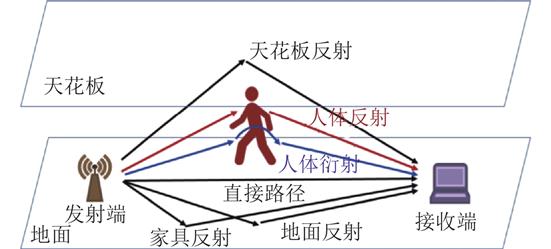| 摘 要: | 
近年来,随着普适计算概念的深入人心,智能感知技术已成为研究者们关注的焦点,且基于WiFi的非接触式感知因其优秀的普适性、低廉的部署成本以及良好的用户体验越来越受到学术界和工业界的青睐.典型的WiFi非接触式感知工作有手势识别、呼吸检测、入侵检测、行为识别等,这些工作若实际部署,需首先避免其他无关区域中无关行为的干扰,因此需要判断目标是否进入到特定的感知区域中.这意味着系统应具备精准判断目标在界线哪一侧的能力,然而现有工作未能找到一个可以对某个自由设定的边界进行精确监控的方法,这阻碍了WiFi感知应用的实际落地.
基于这一关键问题,从电磁波衍射的物理本质出发,结合菲涅尔衍射模型(Fresnel diffraction model),找到一种目标穿越link (收发设备天线的连线)时的信号特征(Rayleigh distribution in Fresnel diffraction model,RFD),并揭示该信号特征与人体活动之间的数学关系;之后以link作为边界,结合天线间距带来的波形时延以及AGC (automatic gain control)在link被遮挡时的特征,通过越线检测实现对边界的监控.在此基础上,还实现了两个实际应用,即入侵检测系统和居家状态监测系统,前者的精确率超过89%、召回率超过91%,后者的准确率超过89%.在验证所提边界监控算法的可用性和鲁棒性的同时,也展示了所提方法与其他WiFi感知技术相结合的巨大潜力,为WiFi感知技术的实际部署提供了思考方向.

|




